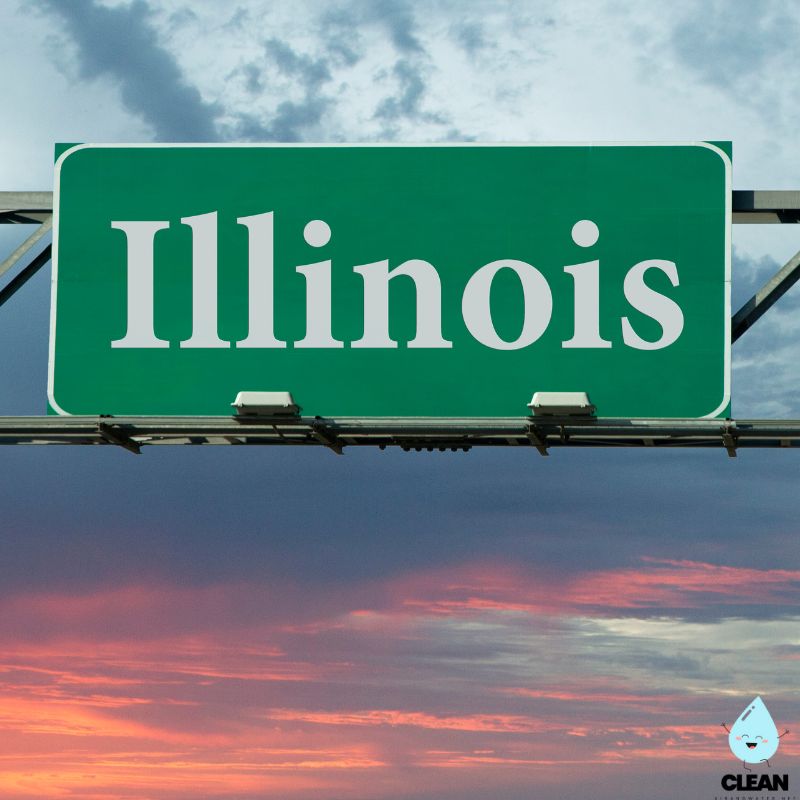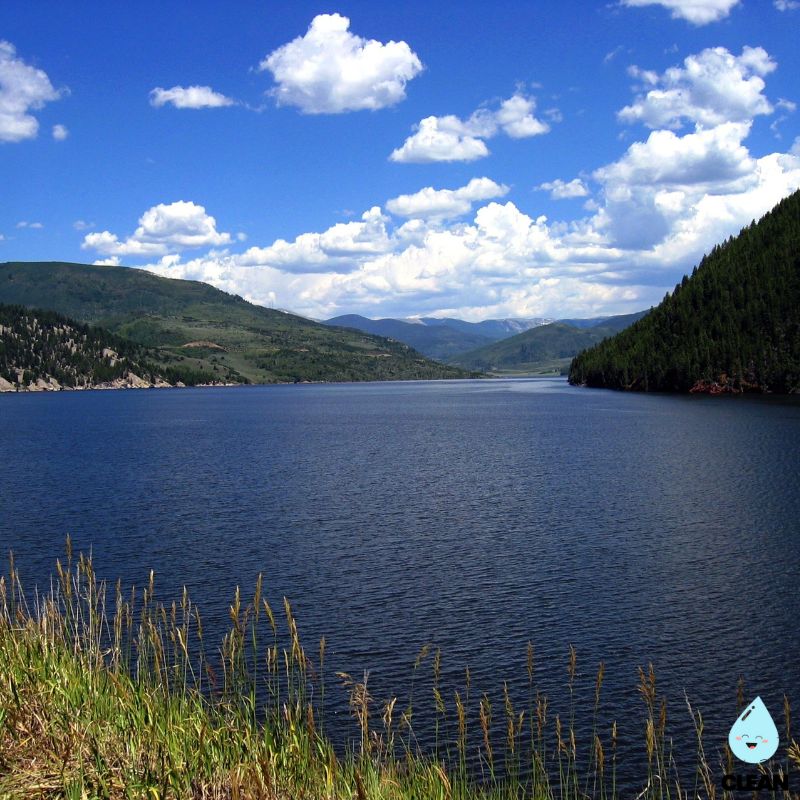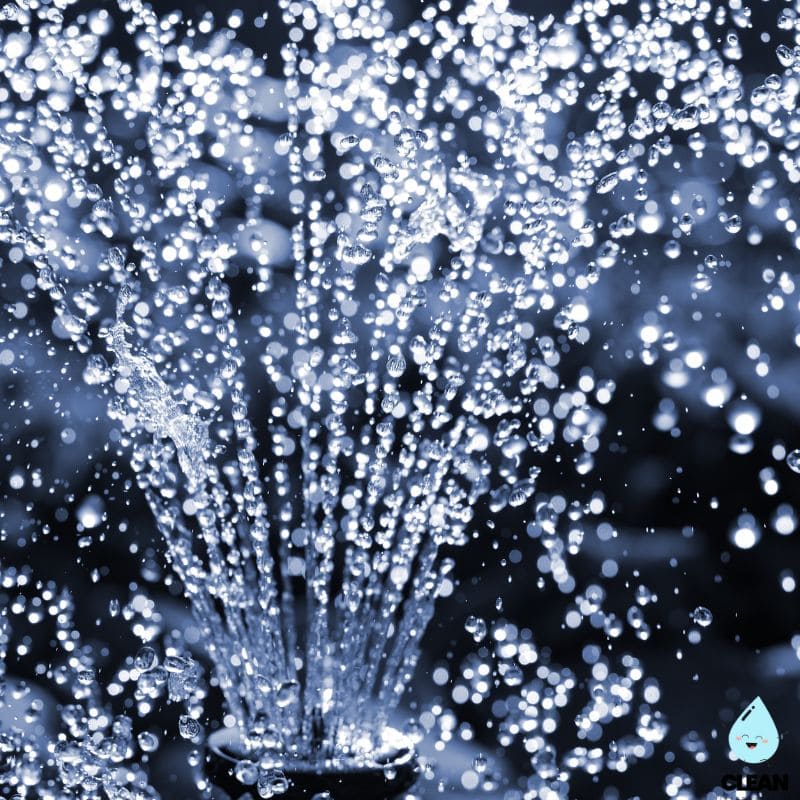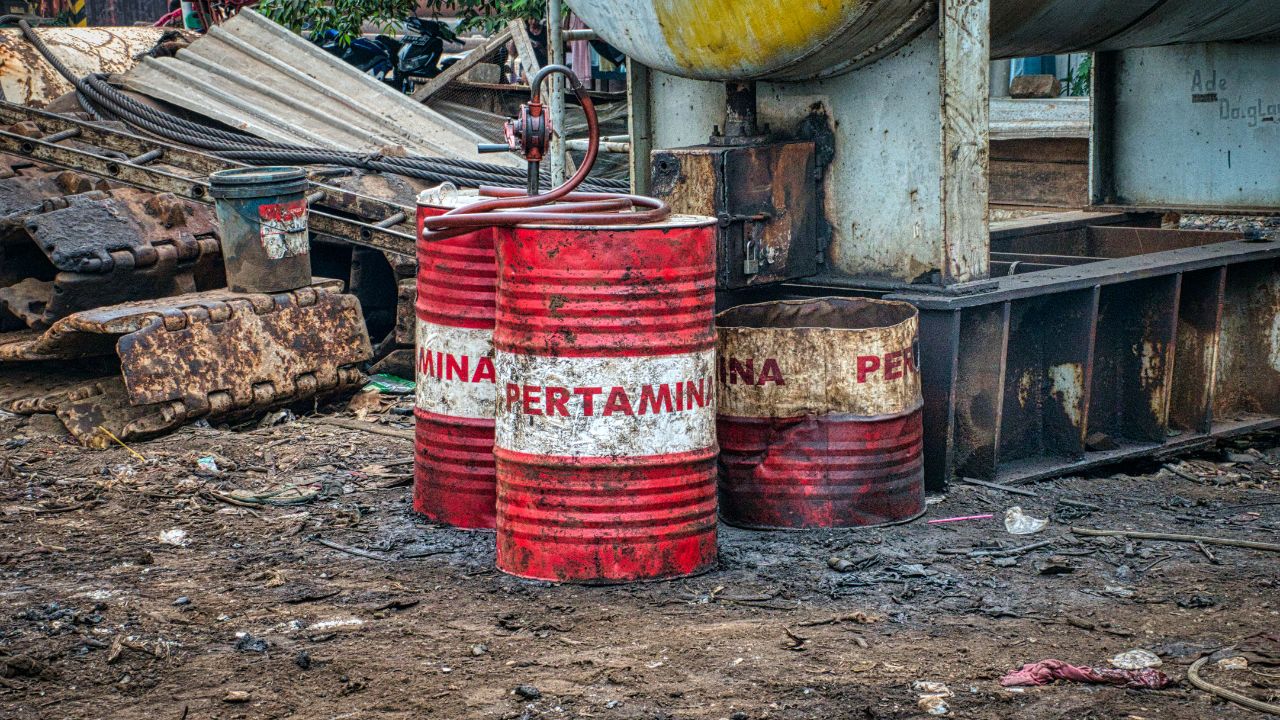Illinois Water Quality at a Glance
moderate concerns
Is Illinois Water Safe to Drink?
Generally Yes, With Moderate Concerns – Most Illinois water systems meet federal standards and Chicago has notably low PFAS levels. However, 1.3 million residents are served by community water systems with detected PFAS above 2 ppt. Additional concerns include disinfection byproducts, chromium-6, and lead infrastructure, particularly in Chicago where 70% of service lines are lead. The state recently adopted new PFAS groundwater standards and is actively monitoring contamination.
⚠️ Key Concerns for Illinois Residents
- PFAS “Forever Chemicals”: 1.3 million served by affected systems; 47 water systems recently notified of exceedances; localized hotspots like Crest Hill
- Lead Infrastructure: Chicago has 70% lead service lines; Johns Hopkins study estimates 70% of children under 6 may be exposed
- Disinfection Byproducts: Elevated levels of chloroform, haloacetic acids, and trihalomethanes in multiple systems increasing cancer risk
- Chromium-6: Detected across the state; Chicago levels about half the national average but still present at concerning levels
Read the full report below for detailed analysis, city-specific data, and actionable recommendations for Illinois residents.
Illinois – The Prairie State – Water Quality Report 2025: PFAS Testing, Infrastructure Concerns & Safety across your state
Illinois’ water infrastructure serves approximately 12.8 million residents across diverse geographical regions, from the shores of Lake Michigan in the northeast to the Mississippi River in the west. The state operates through a complex network of over 1,749 community water systems and nearly 3,800 non-community systems, ranging from Chicago’s massive James W. Jardine Water Purification Plant—the world’s largest water treatment facility—which serves over 5 million people, to smaller groundwater-dependent systems throughout rural Illinois. Illinois’ water sources include the Great Lakes system, the Mississippi, Illinois, and Ohio river systems, along with deep sandstone aquifers that supply groundwater to communities across the state.
Despite abundant water resources, Illinois faces significant infrastructure challenges. According to the American Society of Civil Engineers, Illinois’ water infrastructure requires substantial investment, with an estimated $32 billion needed for drinking, stormwater, and wastewater infrastructure over the next 20 years. The state has received over $332 million in federal infrastructure investments from the Biden-Harris Administration’s Bipartisan Infrastructure Law for drinking water upgrades, with additional funding for clean water infrastructure and lead service line replacement. Illinois’ commitment to water quality improvement is demonstrated through partnerships between the Illinois Environmental Protection Agency (Illinois EPA), local utilities, and federal agencies working to ensure safe, reliable water access for all residents while protecting the Great Lakes ecosystem.

Illinois Water Quality: Current Status (2024-2025)
Statewide Compliance and Testing
- Overall Compliance: The majority of Illinois’ 1,749 community water systems meet federal Safe Drinking Water Act standards, though 47 systems have been notified of PFAS contamination levels exceeding new state groundwater quality standards, affecting over 438,000 residents.
- PFAS Leadership: Illinois has emerged as a national leader in PFAS regulation and monitoring, completing a comprehensive statewide investigation of all community water systems in 2021 and establishing some of the most stringent state PFAS standards in the country with groundwater quality standards for six PFAS chemicals.
- Infrastructure Investment: Over $332 million in federal funding through the Bipartisan Infrastructure Law has been allocated to Illinois for drinking water infrastructure improvements, with an additional $240+ million specifically for lead service line replacement and multiple rounds of clean water infrastructure funding.
Major Water Sources and Challenges
- Lake Michigan System: Serves over 5 million residents in northeastern Illinois through the world’s largest water treatment facility (Jardine Plant), with strict usage limitations under U.S. Supreme Court decree governing Great Lakes diversions.
- Groundwater Aquifers: Deep sandstone aquifers face depletion concerns, with some high-capacity wells potentially unusable within 15 years if current usage patterns continue, particularly affecting suburban communities reliant on groundwater.
- Regional Fragmentation: Illinois’ water service delivery is highly fragmented with over 1,700 systems operating independently, creating inefficiencies and complicating coordinated regional water management efforts.
Emerging Contaminant Response
- PFAS Regulation Implementation: Illinois has established groundwater quality standards for six PFAS chemicals, with some of the most protective limits in the nation (PFOA at 4 ppt, PFOS at 4 ppt, PFHxS at 10 ppt), requiring water systems to comply ahead of federal MCL implementation in 2029.
- Advanced Treatment Technology: Water utilities are implementing activated carbon filtration, reverse osmosis, and other advanced treatment technologies to remove PFAS and other emerging contaminants from drinking water supplies.
- Lead Service Line Replacement: Illinois has the most lead service lines per capita of any state, with over $240 million in dedicated federal funding for lead service line replacement activities, targeting systematic removal under the Lead Service Line Replacement and Notification Act.
Rural and Disadvantaged Communities
- Infrastructure Disparities: Rural water systems face challenges with aging infrastructure, groundwater depletion, and higher per-capita costs for compliance with emerging contaminant regulations and treatment upgrades.
- Targeted Federal Support: Dedicated funding streams through the Emerging Contaminant Small or Disadvantaged Communities program provide grants and forgivable loans, with 49% of federal funds required to be provided as grants or principal forgiveness loans to ensure equitable access to safe drinking water across Illinois.
- Regional Cooperation: Projects like the Grand Prairie Water Commission demonstrate regional cooperation, with Chicago extending Lake Michigan water access to groundwater-dependent suburban communities facing aquifer depletion.
Looking Forward: 2025-2030
Illinois’ water quality landscape is undergoing significant transformation as utilities prepare for federal PFAS regulations taking effect in 2029 while addressing groundwater depletion and aging infrastructure challenges. The state’s proactive approach to PFAS regulation, combined with substantial federal infrastructure investments and innovative regional partnerships, positions Illinois as a leader in addressing 21st-century water challenges. However, successful implementation will require continued collaboration between state regulators, water utilities, and communities to balance Great Lakes protection with growing demand, ensure equitable access to safe drinking water, and address the complex interplay of urban development, climate change, and water sustainability that defines Illinois’ water future.
Recommendations for Illinois Residents

Know Your Water Source
Contact your water utility to request annual water quality reports and ask about PFAS testing results. Use Illinois EPA’s Drinking Water Watch system to access your local system’s testing data and understand any contaminants of concern in your area.

Support Infrastructure Investment
Stay informed about local water infrastructure needs and support utility rate structures that enable necessary improvements. Attend public meetings when utilities discuss infrastructure upgrades, PFAS treatment investments, and lead service line replacement projects.

Consider PFAS-Certified Filtration
For areas with known PFAS contamination, consider NSF-certified activated carbon or reverse osmosis filters specifically tested for PFAS removal. These can provide additional protection while utilities implement treatment upgrades required by Illinois’ stringent PFAS standards.

Report Water Quality Concerns
Contact your local water utility immediately for taste, odor, or color concerns. Report suspected contamination to the Illinois EPA’s Bureau of Water at (217) 782-3362 for investigation and follow-up, or email epa.pfas@illinois.gov for PFAS-related concerns.

Practice Water Conservation
Support Illinois’ water sustainability by implementing conservation measures, especially in groundwater-dependent communities. Reducing demand helps protect aquifers from depletion and maintains system reliability while supporting Great Lakes conservation efforts.
Illinois Cities We Cover
Chicago Water Quality
Comprehensive analysis of Chicago’s massive water system, home to the world’s largest water treatment plant serving over 5 million people. Includes information on Lake Michigan intake, treatment processes, infrastructure modernization, and PFAS monitoring in the nation’s third-largest city.
Frequently Asked Questions
Is Illinois’ tap water safe to drink?
Most of Illinois’ public water systems meet federal drinking water standards and are generally safe for consumption. However, 1.3 million residents are served by community water systems with detected PFAS above 2 ppt, and 47 systems have PFAS levels exceeding new state groundwater quality standards.
The Illinois EPA requires comprehensive testing across all 1,749 community water systems. Illinois has established some of the nation’s most protective PFAS standards and completed a statewide investigation of all community water systems in 2021. Water utilities are implementing advanced treatment technologies and the state has received over $332 million in federal funding to address emerging contaminants and infrastructure needs. Residents should review their utility’s annual water quality report and check the Illinois EPA Drinking Water Watch system for local conditions.
Why is Illinois leading on PFAS regulation?
Illinois has been among the most proactive states in developing PFAS health standards due to widespread contamination and its commitment to protecting residents and the Great Lakes ecosystem.
Illinois completed a comprehensive statewide investigation of all community water systems for PFAS in 2021, the first state to do so. The state has established groundwater quality standards for six PFAS chemicals that are more protective than federal standards in some cases. Illinois has also banned the use of PFAS-containing firefighting foam for training and testing, and requires notification of foam discharge. This proactive approach helps Illinois stay ahead of federal regulations taking effect in 2029 and demonstrates leadership in protecting the Great Lakes from PFAS contamination.
How can I find out about my local water quality in Illinois?
Illinois residents can access comprehensive water quality information through several state and federal resources:
• Annual Water Quality Reports: Contact your water utility directly for their Consumer Confidence Report, which details all testing results and any violations or concerns
• Illinois EPA Drinking Water Watch: Visit the Illinois EPA’s online database at water.epa.state.il.us/dww/index.jsp to access testing results and compliance information for your local water system
• PFAS Investigation Dashboard: The Illinois EPA provides an interactive dashboard showing PFAS testing results from their statewide investigation of all community water systems
• UCMR-5 Data: Federal EPA’s Unregulated Contaminant Monitoring Rule data provides additional PFAS testing information from 2023-2025
What are Illinois’ main water challenges?
Illinois faces multiple interconnected water challenges that require coordinated solutions:
Groundwater Depletion: Deep sandstone aquifers are being depleted unsustainably, with some high-capacity wells potentially unusable within 15 years
PFAS Contamination: Widespread “forever chemical” contamination affecting 1.3 million residents served by systems with detected PFAS above 2 ppt, with 47 community water systems exceeding new state groundwater quality standards
Lead Service Lines: Illinois has the most lead service lines per capita of any state, requiring extensive replacement to achieve lead-free water systems
System Fragmentation: Over 1,700 separate water systems operate independently, creating inefficiencies in service delivery and infrastructure investment
Great Lakes Protection: Balancing growing water demand with strict limits on Lake Michigan diversions under federal court decree
Quality News About Your Water
Get the comprehensive water quality news coverage you need with our dedicated US Water News Service. From coast to coast, we deliver in-depth reporting and expert analysis on PFAS contamination, EPA regulatory changes, infrastructure developments, and emerging water safety issues affecting communities nationwide. While mainstream media only covers the biggest stories, we provide the detailed, ongoing coverage that helps you understand the full scope of America’s water challenges. Whether you’re a concerned citizen, water professional, or community leader, our daily updates and analytical insights keep you informed about the issues that matter most to public health and environmental safety.
Contaminants of Concern

PFAS “Forever Chemicals”
Source: Firefighting foam use at airports and military installations, industrial manufacturing, consumer products, and atmospheric deposition from global PFAS cycling
Health Effects: Linked to kidney and testicular cancer, liver damage, immune system suppression, high cholesterol, and developmental effects in children
Current Status: 1.3 million Illinois residents are served by community water systems with detected PFAS above 2 ppt, with 47 systems exceeding new state groundwater quality standards affecting over 438,000 residents. Illinois has established some of the nation’s most protective PFAS standards. Illinois Standards: Groundwater quality standards for PFOA (4 ppt), PFOS (4 ppt), and PFHxS (10 ppt), among others

Lead and Legacy Contaminants
Source: Lead service lines (Illinois has the most per capita of any state), aging infrastructure, historical industrial activities, and agricultural runoff contributing to nutrient pollution in the Great Lakes
Health Effects: Lead exposure causes irreversible developmental effects in children, including decreased IQ and academic achievement. Nutrient pollution creates algae blooms that deplete oxygen and harm aquatic ecosystems
Current Status: Illinois is prioritizing lead service line replacement with over $240 million in dedicated federal funding for this purpose, targeting systematic removal under the Lead Service Line Replacement and Notification Act. Regulatory Response: Enhanced oversight under Illinois EPA and federal EPA requirements, with Chicago having an estimated 400,000+ lead service lines requiring replacement over several decades
Please read – our information
The information presented on cleanairandwater.net is compiled from official water quality reports, trusted news sources, government websites, and public health resources. While we strive for accuracy and thoroughness in our presentations, we are not scientists, engineers, or qualified water quality professionals.
Our mission is to present water quality information in an accessible, real-world format that helps people understand what’s in their water and make informed decisions about their health and safety. We believe that complex environmental information should be available to everyone in a format that’s easy to understand.
We make every effort to ensure our content is current and accurate, but we cannot guarantee that all information is complete or error-free. This website should not replace official communications from your local water utility or health department. We always recommend consulting official sources for the most up-to-date information regarding your specific water system.
Clean Air and Water is not liable for any unintentional errors, omissions, or outdated information. The content on this site is provided for informational purposes only and should not be considered professional advice.


